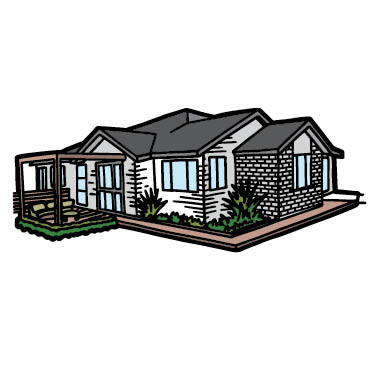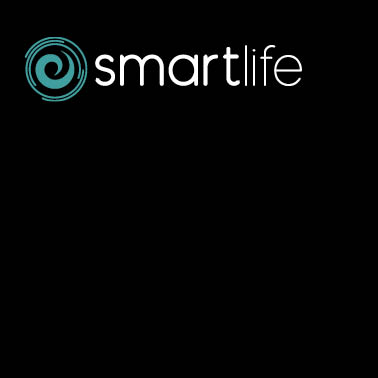What is a Smart Home?
Understanding what a Smart Home is and what it is not will be a guiding thought as you plan and invest in your own smart home technology.
The ideas surrounding smart homes are not new and are not outside the scope of easy access and possibility for most people.
The common basic concepts of a smart home are about smart electronic devices that are controlled with either voice, apps, automated routines or remotely via a mobile or internet connection. For a smart home to operate most efficiently there is often the need for a combination (if not all) of these key components.
Range of smart electrical devices
This is sometimes known as the Internet of Things (IoT) and really refers to the growing range of electronic devices that have the ability to directly (or indirectly) connect the internet and/or a local network - in this case in private homes. These devices are only smart because they have some built in ability to be controlled by other devices or software. These are mostly switches (ON/OFF), and electronic value settings (different colours.)
The range of smart devices is getting quite overwelming now and some are on the verge (sometimes right over the edge) of necessity. But, they will appear on the market and only the strong (and relatively useful) will survive. Here are some examples:
- Smart lighting systems - individual light bulbs, switches, dimmers, relays, light sensors, colour control, groups of lights, and smart control of standard 'dumb' light bulbs
- Smart thermostats - combine with other sensors to only switch on when needed, energy management, mood control, weather protection, and solar system integration
- Smart security - motion sensors, door and window open or closed sensors, smoke sensors, access keypads, light beams, pressure pads, sonar sensing, sounders, and identity recignition
- Smart locks - enhanced security with control by key pads, RFI fobs, finger print recognition, app control, voice control, geofencing, and remote access
- Smart cameras - fixed position, rotate and pan, zoom control, night vision, weatherproof, concealed, baby and child monitoring, and fall detection
- Smart plugs and sockets - control connected devices (that don't need to be smart), energy management control, energy monitoring, load shedding, and device activity monitoring
- Smart robot lawnmowers and cleaners - make some of the mundane regular tasks automated - grass cutting, and home vacuuming (and mopping)
Digital voice assistants or hubs
Digital voice assistants are becoming more and more popular and they are now very reasonably priced. The voice technology is also being licensed to other manufacturers to include in their products as well as the original.
Most digital voice assistants have a build in speaker (and microphone) and will connect to your home Wifi network and cloud control systems.
They are used for a large range of interactive reasons - news, weather, information announcing, music and video control, and control of other connected smart devices within your smart home environment.
There are a number of manufacturers of smart digital voice assistants and they each give a name to their voice character.
Here are some examples:
- Amazon Echo - and Alexa (voice)
- Google Home - and Google Assistant (voice)
- Apple HomePod - and Siri (voice)
Each voice assistant solution has similar functionality and they all have a dedicated mobile App to configure, connect and use the smart services.
Many smart devices will advertise the fact that they are already enabled to work with one or many of these digital voice assistants. It is a good marketing feature to have.
Mobile apps on phones, tablets, watches etc.
Most smart devices connect to a dedicated mobile app. They allow for programming, configuration, manual override, and human interaction (video calls, alerts, and messages.) You don't normally need to use these apps very much (if at all) once the devices are integrated into your home, but there are some very useful tools that shouldn't be ignored.
Here are some examples of the typical functionality of these smart apps:
- ON/OFF switching - use your phone instead of the switch on the wall to turn on lights, use your phone to switch on relays that are actually embedded in electrical devices and can't be accessed any other way
- Set timers - Easily configure ON/OFF timer control with quite comprehensive calendar controlls
- Choose preset scenes - Make things quick and easy by choosing from a menu of predefined 'grouped' settings - turn on the light bulb, make it a warm orange and dim to 50%
- Create customised routines - Spend time creating your own routines to have your different smart devices interact with each other and help you run your smart home the way you want it to work
Automated control sequences
One of the key components to a smart home is the preconfigured (and indeed artificially learnt) automation routines. These are like simple thought patterns that are defined within your smart home control software (usually an app or series of apps.) As the smart home owner you have to take the time to sit down and think about what 'thinking' and 'responding' you want your home to do.
Many smart devices come with preconfigured automation options you can choose (or customise). The control apps also allow you to create your own.
So, depending on how many smart attributes there or across your total collection of smart devices, this will impact your automation choices and logic path definitions.
Here are some examples:
- Simple IF this THEN that - IF the switch A is set to ON, THEN close the blind, switch on a light and mute the TV, or something similar
- Multiple IFs - IF the room temperature is below 20 degrees C and IF the window is closed THEN put on the heater.
- Conditional controls - When the time of day is after sunset, and the day is a week day, and there are more than one people at home, allow the pool lights to be switched on or off
- Human interaction - the number of people present in the home could determine which rooms have their heating managed smartly, geofencing of known individuals could switch on or off specific smart services based on where they are in relation to the home, and voice recognition could deliver different results for the same voice command
Remote access via mobile or internet
Most mobile devices can connect to the internet and this then makes it possible to interact with your smart home devices (via your home network) as if you were there in person. For many smart home resources the performance is pretty close (as far as speed goes) to being at home. Video playback might be slowed by you mobile connection speed, but most other things are not too noticeably different.
Here are some examples:
- Answer the smart doorbell (as if you were there) - these often include two way video and audio as well as motion control to alert you to the fact of someone approaching the doorbell before they even ring it
- Switch ON or OFF any device - If you forgot to turn off the lights, then use your phone to do it once you get to work
- Check on settings, temperatures, sensors and device status - be alerted of low batteries, high temperatures, and excessive time between events (or whatever monitoring you are checking on)
- Switch ON or OFF routines - leave work early and switch on your 'I'm coming home routine'
- Receive alerts and warnings - monitor in app alerts and other messages to check on security, status, and physical conditions
- Manage security - check footage from motion triggered video recordings and determine if action is required
Where it all started for me
The most basic semi-smart solution for me was more than 20 years ago. It wasn't really 'smart' but it was automated and it introduced some of the feelings of extra security, control, and home organisation.
The gadget was a $10 plug socket timer, the mechanical type where you have to slide little plastic tags either to the centre of the 24 hour dial for OFF or to the outside for ON. Once configured, you plug into the wall, add to it the plug for the lamp in the living room, check the dial is pointing to the correct time and then slide the control to ON.
Like a say, it wasn't really what you call 'smart', but it embodied many other aspects of the modern smart home. Plus, it didn't cost the earth and I could install and configure it myself.
This type of plug timer could only cycle through the same routine every 24 hours, but you can get very cheap digital versions today where you can have different schedules for every day of the week.
An upgrade
Fast forward a few years and my next trial was a lot smarter...
I bought a simple smart wifi wall light switch and a battery powered wifi motion sensor. The light switch controlled the outside porch light and the motion sensor was installed high on the wall under the covered porch roof.
I downloaded and installed the basic Tuya smart home app and enrolled these two devices. I now had control of the light switch from my phone, I could used Siri to turn it on and off and most importantly, I could create a few smart routines that brought the motion sensor into the story.
- If it is between the hours of 8pm and 6am (or alternatively between sunset and sunrise)...
- And if the motion sensor detects a movement...
- Switch on the porch light...
- Wait for 20 seconds, and turn off the light.
That was it, and it is still running today.
The 'smart' feeling was now even stronger and I had begun on the path of real smart device behaviours. This was automated control and it was triggered only when necessary. It also provides the added feeling of additional security and convenience (you can see the door lock - which isn't smart yet - when you return home in the dark.)
Every journey starts somewhere and this is it for me. To be continued...
|


Take control of the energy that your Smart Home uses. Save money, help the environment and know what's going on. Read on...
Ad RHS Smart Home
|
